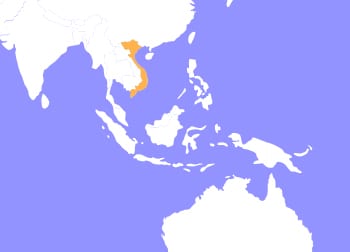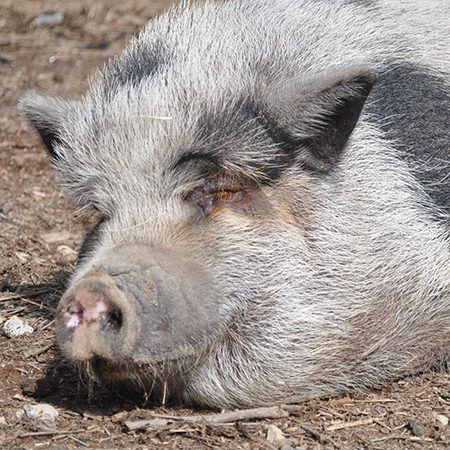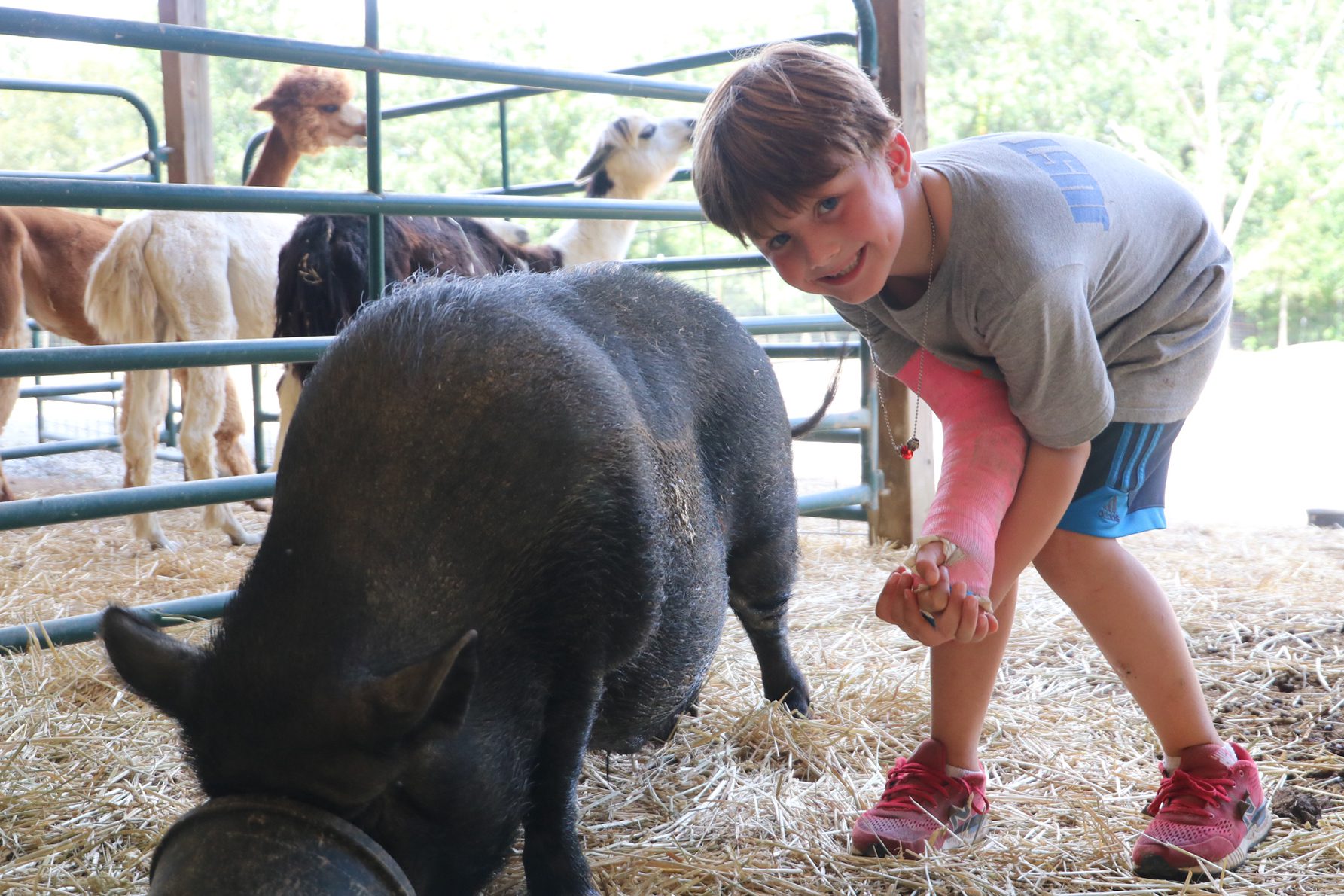Pot Bellied Pig
Sus scrofa domesticus
The Pot-Bellied Pig is an endangered traditional Vietnamese breed of domestic pig. This pig can be described as uniformly black in color with heavily wrinkled skin. These pigs have short legs and a low-hanging belly, hence the name. Pregnant sows bellies may even drag on the ground. The head is small, with an up-turned snout, small ears and eyes, and a heavy sagging jowl. This pig has an average weight of 110 pounds, and an average height of 14 inches.
This animal was originally bred and revered for its meat, it is a slow-growing animal that develops flavors in the meat. It is thought to have originated in the Nam Dinh province of Vietnam in the Red River Delta. It was the most dominant local pig breed in surrounding provinces and distributed throughout the rest of the region. These pigs have been observed having a good resistance to disease and parasites. They are forages eating mainly rice straw and water plants of its native area. In the wild, they may form herds of large numbers, communicating with a variety of squeaks, grunds, and gurgles.
Pot bellied pigs have been growing in popularity as pets in some countries. They are hypoallergenic and relatively smart and clean animals. Pigs have poor vision but an excellent sense of smell and hearing. Rooting is a common behavior observed with potbellied pigs, this is them digging and searching in the ground with its snout.
Say Hello To Cub Creek's Pigs: Wilbur, Orville, & Izzy
Wilbur came to us in Spring of 2006 along with Orville. These two pigs live up to the pot-bellied name. They love nothing more than to eat and sleep. Their favorite sleeping location is in the piles of hay the alpacas drop on the ground! While they look very similar, you can tell them apart by Wilbur’s nose, which has a little bit of white on it. Izzy was brought to camp as a baby back in March of 2011. Unlike our other pigs, she has a grey body with black spots on her back. Her favorite activity is sleeping for sure, especially in a mud pit on a hot day.

It is thought that these pigs have originated in Nam Định province of Vietnam, in the Red River Delta.
HABITAT -In the wild they inhabit marshy wetlands and forests of Vietnam.
DIET -They are mostly foragers eating rice straw and water plants in the area.
FUN FACT -Pigs skin has less hair than most mammals, they wallow in the mud to stay cool and protect their skin.
SOCIAL BEHAVIOR -They are social animals forming herds in the wild.
ACTIVITY -In the wild more nocturnal/crepuscular, tend to be more diurnal in captivity.
PREDATORS -Humans are a predator of the Pot Bellied pig, using it for meat production and causing habitat loss.
SIZE -They have an average weight of 110 pounds, and an average height of 14 inches.
RELATIVES -There are many species of pigs related to the Pot bellied pig, in the region there are Oio, Co, and Heo Moi pigs.
CONSERVATION -The wild population of Pot Bellied pigs is categorized as endangered by the FAO.
Cub Creek Animal Care Information
Housing - Our Pot bellied pigs thrive in open pasture environments, with green fields for grazing. The pastures are enclosed with fencing to keep predators out, and provide a covered area to take shelter in extreme weather. We provide automatic water dispensers that always keep fresh water for them.
Diet - The majority of our pot bellied pigs diet consists of hay, range cubes, and pig pellets. This provides well balanced nutrition, supplemented by lush grasses they graze on. The food is provided to them in food bowls. They also get to enjoy special treats of various fruits and vegetables!
Enrichment - We love our pot bellied pigs and provide them with plenty of enrichment. Scatter feeding is a technique we use to help make mealtimes last longer, and allows them to eat slower. Since the food is more spread out rather than in one large pile, they must do a bit more foraging. Campers love socializing with them during the summertime, and will make them special treats like frozen popsicles. We also provide space for a mud pool that they love to wallow in for hours and cool off.


